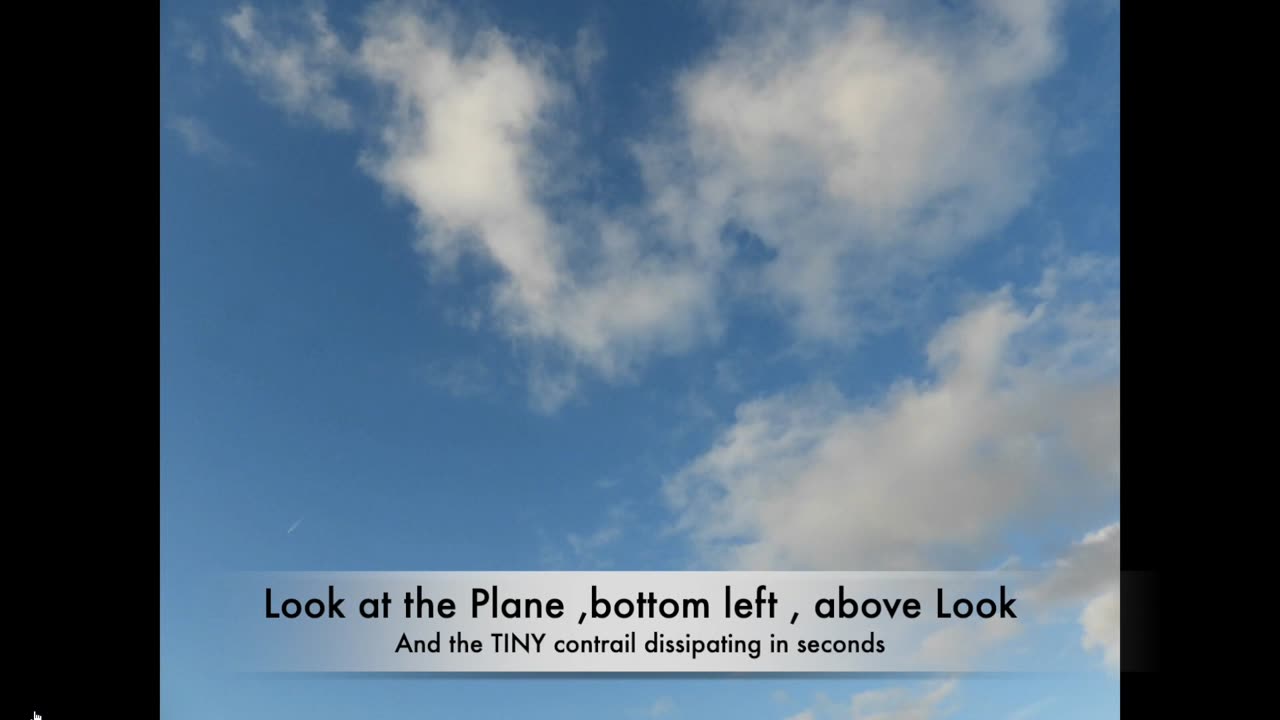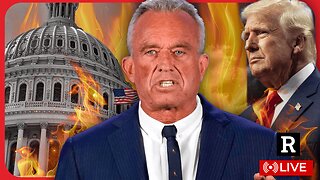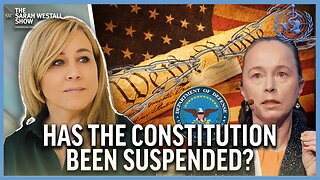Premium Only Content

Ask your local TD for an explanation for this? Chemtrails?Mick Daniels 26-01-24
CHEMTRAILS – AN AIRLINE MECHANIC’S STATEMENT
10/09/2014 BLOGMAN - BLACKSMITH OF TRUTH LEAVE A COMMENT
Share Button
Interesting testimonies… but still no answer to what chemtrails are:
An Anonymous Email From An Airline Mechanic
For reasons you will understand as you read this I can not divulge my identity.
I am an aircraft mechanic for a major airline. I work at one of our maintenance bases located at a large airport. I have discovered some information that I think you will find important.
First, I should tell you something about the “pecking order” among mechanics. It is important to my story and to the cause to which you have dedicated yourself.
Mechanics want to work on three things. The avionics, the engines, or the flight controls. The mechanics that work on these systems are considered at the top of the “pecking order”.
Next come the mechanics that work on the hydraulics and air conditioning systems. Then come the ones who work on the galley and other non-essential systems. But at the very bottom of the list are the mechanics that work on the waste disposal systems.
No mechanic wants to work on the pumps, tanks, and pipes that are used to store the waste from the lavatories. But at every airport where I have worked there are always 2 or 3 mechanics that volunteer to work on the lavatory systems.
The other mechanics are happy to let them do it. Because of this you will have only 2 or 3 mechanics that work on these systems at any one airport. No one pays much attention to these guys and no mechanic socializes with another mechanic who only works on the waste systems.
Fact is, I had never even thought much about this situation until last month. Like most airlines we have reciprocal agreements with the other airlines that fly into this airport. If they have a problem with a plane one of our mechanics will take care of it.
Likewise, if one of our planes has a problem at an airport where the other airline has a maintenance base, they will fix our plane.
One day last month I was called out from our base to work on a plane for another airline. When I got the call the dispatcher did not know what the problem was. When I got to the plane I found out that the problem was in waste disposal system. There was nothing for me to do but to crawl in and fix the problem.
When I got into the bay I realized that something was not right. There were more tanks, pumps, and pipes then should have been there. At first I assumed that the waste disposal system had been changed. It had been about 10 years since I had worked on this particular model of aircraft.
As I tried to find the problem I quickly realized the extra piping and tanks were not connected to the waste disposal system, at all. I had just discovered this when another mechanic from my company showed up. It was one of the mechanics who usually works on this particular type of plane, and I happily turned the job over to him.
As I was leaving I asked him about the extra equipment.
told me to, “worry about my end of the plane and let him worry about his end!”
The next day I was on the company computer to look up a wiring schematic.
While I was there I decided to look up the extra equipment I had found. To my amazement the manuals did not show any of the extra equipment I had seen with my own eyes the day before. I even tied in to the manufacturer files and still found nothing. Now I was really determined to find out what that equipment did.
The next week we had three of our planes in our main hanger for periodic inspection. There are mechanics crawling all over a plane during these inspections. I had just finished my shift and I decided to have a look at the waste system on one of our planes. With all the mechanics around I figured that no one would notice an extra one on the plane.
Sure enough, the plane I choose had the extra equipment! I began to trace the system of pipes, pumps, and tanks. I found what appeared to be the control unit for the system. It was a standard looking avionics control box but it had no markings of any kind.
I could trace the control wires from the box to the pumps and valves but there were no control circuits coming into the unit. The only wires coming into the unit was a power connection to the aircraft’s main power bus.
The system had 1 large tank and 2 smaller tanks. It was hard to tell in the cramped compartment, but it looked like the large tank could hold about 50 gallons. The tanks were connected to a fill and drain valve that passed through the fuselage just behind the drain valve for the waste system.
When I had a chance to look for this connection under the plane I found it cunningly hidden behind a panel under the panel used to access the waste drain.
I began to trace the piping from the pumps. These pipes lead to a network of small pipes that ended in the trailing edges of the wings and horizontal stabilizers.
If you look closely at the wings of a large airplane you will see a set of wires, about the size of your finger, extending from the trailing edge of the wing surfaces. These are the static discharge wicks. They are used to dissipate the static electric charge that builds up on a plane in flight.
I discovered that the pipes from this mystery system lead to every 1 out of 3 of these static discharge wicks. These wicks had been “hollowed out” to allow whatever flows through these pipes to be discharged through the fake wicks.
It was while I was on the wing that one of the managers spotted me. He ordered me out of the hanger telling me that my shift was over and I had not been authorized any overtime.
The next couple of days were very busy and I had no time to continue my investigation. Late one afternoon, two days after my discovery, I was called to replace an engine temperature sensor on a plane due to take off in two hours. I finished the job and turned in the paperwork.
About 30 minutes later I was paged to see the General Manager. When I went in his office I found that our union rep and two others who I did not know were waiting on me. He told me that a serious problem had been discovered. He said that I was being written up and suspended for turning in false paperwork.
He handed me a disciplinary form stating that I had turned in false paperwork on the engine temperature sensor I had installed a few hours before. I was floored and began to protest. I told them that this was ridiculous and that I had done this work.
The union rep spoke up at this point and recommended that we take a look at the plane to see if we could straighten it all out. I then asked who the other two men were. The GM told me that they were airline safety inspectors but would not give me their names.
We proceeded to the plane, which should have been in the air but was parked on our maintenance ramp. We opened the engine cowling and the union rep pulled the sensor. He checked the serial number and told everyone that it was the old instrument. We then went to the parts bay and went back into the racks.
The union rep checked my report and pulled from the rack a sealed box. He opened the box and pulled out the engine temperature sensor with the serial number of the one I had installed. I was told that I was suspended for a week without pay and to leave immediately.
I sat at home the first day of my suspension wondering what the hell had happened to me. That evening I received a phone call.
The voice told me, “Now you know what happens to mechanics who poke around in things they shouldn’t. The next time you start working on systems that are no concern of yours you will lose your job! As it is, I’m feeling generous, I believe that you’ll be able to go back to work soon.”
CLICK…
Again, I had to pick myself from off the floor. As my mind raced, it was at this moment that I made the connection that what had happened to me must have been directly connected to my tracing the “mysterious” piping.
The next morning the General Manager called me. He said that due to my past excellent employment record that the suspension had been reduced to one day and that I should report back to work immediately.
The only thing I could think of was, “what are they trying to hide” and “who are ‘THEY'”!
That day at work went by as if nothing had happened.
None of the other mechanics mentioned the suspension and my union rep told me not to talk about it. That night I logged onto the Internet to try to find some answers.
I don’t remember now how I got there but I came across a site that talked about chemically-laced contrails. That’s when it all came together. But the next morning at work I found a note inside my locked locker.
It said, “Curiosity killed the cat. Don’t be looking at Internet sites that are no concern of yours.”
Well that’s it. Now I know ‘THEY’ are watching me.
While I don’t know what THEY are spraying, I can tell you how they are doing it. I figure they are using the “honey trucks”. These are the trucks that empty the waste from the lavatory waste tanks.
The airports usually contract out this job and nobody goes near these trucks. Who wants to stand next a truck full of sh–. While these guys are emptying the waste tanks, it makes sense that they could easily be filling the tanks of the spray system.
They know the planes flight path so they probably program the control unit to start spraying some amount of time after the plane reaches a certain altitude. The spray nozzles in the fake static wicks are so small that no one in the plane would see a thing.
God help us all.
— A concerned citizen
AN AIRLINE MANAGER’S STATEMENT
Posted by C.E. Carnicom on behalf of the author
May 22, 2000
from Carnicom Website recovered through WayBackMachine Website
Mr. Carnicom:
I read the email you received from the anonymous mechanic and felt compelled to respond to it.
I, too, work for an airline, though I work in upper management levels. I will not say which airline, what city I am located, nor what office I work for, for obvious reasons. I wish I could document everything I am about to relate to you, but to do so is next to impossible and would result in possible physical harm to me.
The email from the anonymous mechanic rings true. Airline companies in America have been participating in something called Project Cloverleaf for a few years now. The earliest date anyone remembers being briefed on it is 1998. I was briefed on it in 1999.
The few airline employees who were briefed on Project Cloverleaf were all made to undergo background checks, and before we were briefed on it we were made to sign non-disclosure agreements, which basically state that if we tell anyone what we know we could be imprisoned.
About twenty employees in our office were briefed along with my by two officials from some government agency. They didn’t tell us which one.
They told us that the government was going to pay our airline, along with others, to release special chemicals from commercial aircraft.
When asked what the chemicals were and why we were going to spray them, they told us that information was given on a need-to-know basis and we weren’t cleared for it. They then went on to state that the chemicals were harmless, but the program was of such importance that it needed to be done at all costs.
When we asked them why didn’t they just rig military aircraft to spray these chemicals, they stated that there weren’t enough military aircraft available to release chemicals on such a large basis as needs to be done.
That’s why Project Cloverleaf was initiated, to allow commercial airlines to assist in releasing these chemicals into the atmosphere.
Then someone asked why all the secrecy was needed. The government reps then stated that if the general public knew that the aircraft they were flying on were releasing chemicals into the air, environmentalist groups would raise hell and demand the spraying stop.
Someone asked one of the G-men then if the chemicals are harmless, why not tell the public what the chemicals are and why we are spraying them?
He seemed perturbed at this question and told us in a tone of authority that the public doesn’t need to know what’s going on, but that this program is in their best interests. He also stated that we should not tell anyone, nor ask any more questions about it. With that, the briefing was over.
All documents in our office pertaining to Project Cloverleaf are kept in locked safes. Nobody is allowed to take these documents out of the office. Very few employees are allowed access to these documents, and they remain tight-lipped about what the documents say.
Mr. Carnicom, I am no fool. I know there’s something going on. And frankly, I am scared.
I feel a high level of guilt that I have been aware of this kind of operation but unable to tell anyone. It’s been eating away at me, knowing that the company I work for may be poisoning the American people. I hope this letter will open some eyes to what’s happening.
Again, I wish I could give you documented information, but you have to understand why I must remain totally anonymous.
Thank you
CLOVERLEAF
-
 16:48
16:48
Tundra Tactical
7 hours ago $4.50 earnedAffordable Medical Gear From ACETAC SHOT Show 2025
53.1K2 -
 1:46:16
1:46:16
Redacted News
10 hours agoRFK CONFIRMATION: Kennedy goes to WAR with Big Pharma Democrats in Fiery Hearing | Redacted Live
242K412 -
 57:31
57:31
Candace Show Podcast
11 hours agoBREAKING! Taylor Swift Turns Against Blake Lively & Ryan Reynolds | Candace Ep 141
222K203 -
 1:04:59
1:04:59
Sarah Westall
8 hours agoRFK Jr Report, Constitution Suspended, War Time Procedures in Place, WHO Exit, DOD w/ Sasha Latypova
68.8K33 -
 1:56:37
1:56:37
Melonie Mac
12 hours agoGo Boom Live Ep 35!
61.5K15 -
 1:01:13
1:01:13
LFA TV
15 hours agoPRESIDENT TRUMP SIGNS LAKEN RILEY ACT | BASED AMERICA 1.29.25 6pm
68.5K8 -
 1:43:07
1:43:07
2 MIKES LIVE
9 hours ago2 MIKES LIVE #172 News Breakdown Wednesday!
35.4K2 -
 1:26:16
1:26:16
The Big Mig™
10 hours agoJ6’r Ryan Samsel Free At Last The BOP & DOJ Exposed
34.7K3 -
 31:34
31:34
The Based Mother
10 hours ago $2.11 earnedEXECUTIVE ORDER MUTILATES GENDER IDEOLOGY! Trump’s pulling out all the stops.
23.3K8 -
 1:05:44
1:05:44
The Amber May Show
1 day ago $1.67 earnedSaving The Innocence | Rescuing Children From Rape Trafficking | Alan Smyth
25.2K3